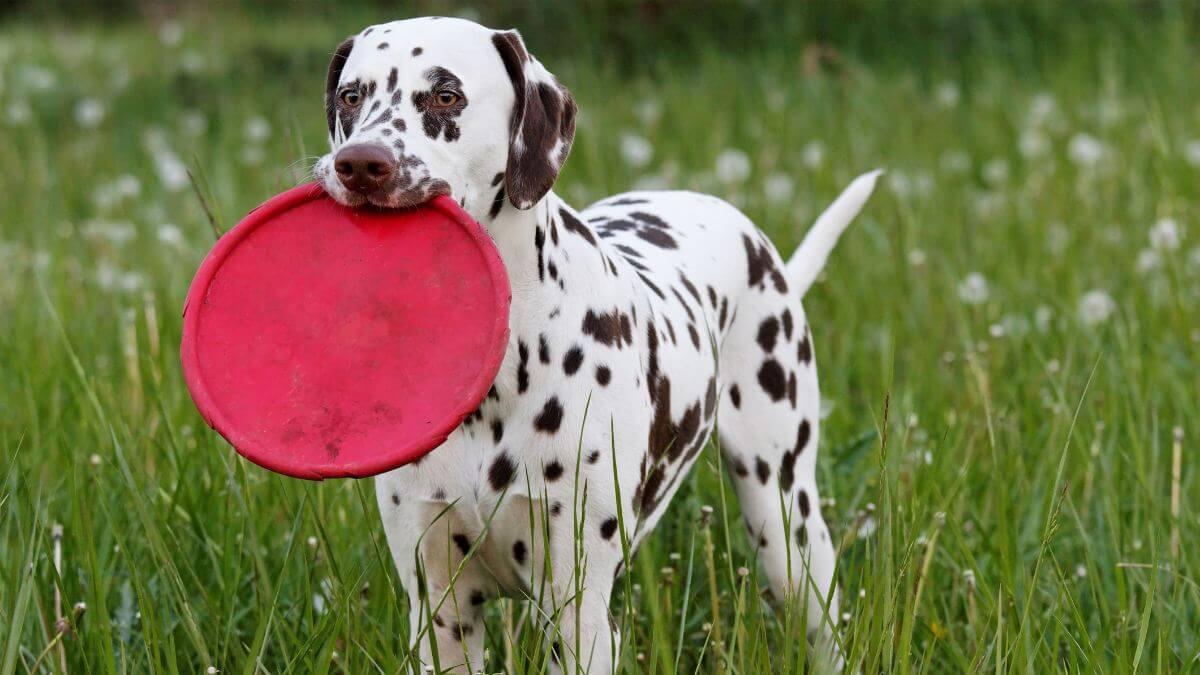


Home » Spotlighting the Dalmatian

This article was originally published in Showsight Magazine, May 2017 issue.
Although the breed is traditionally considered to be from the country of Dalmatia (now Croatia), in actuality, the breed’s beginnings have been shrouded in mystery over time and are virtually unknown. Spotted dogs of similar type have been recorded in countries all over eastern Europe and even into India.
Although their breed beginnings may be in doubt, what cannot be disputed is that they came into their own thanks to the English who recognized their unique bond with horses and their striking good looks. Thus, the breed’s coach dog career was born. Not only were they functional and served guard duties with their owners’ horses and property while on the road, their beauty promoted them to a status symbol standing among the wealthy.
In America, with its lack of nobility, bold nature, and lack of affectation, the Dalmatian became a true working dog. Because of the breed’s affinity with horses, they became a natural in the firehouse with its horse-drawn fire wagons. Although they served primarily as guard dogs at the fire, watching the horses and equipment, they even went so far as serving as the original “siren” by running ahead of the horses, clearing the way. Although that duty has been relegated to the history books, to this day they are considered the official mascot of the fire department.
Fast forward 100+ years and the obvious advances in technology have put the Dalmatian out of work—at least in its historical roles. Today, their primary job is that of family companion, which is a role they truly embrace. But thanks to his versatility, athleticism, and intelligence, the Dalmatian excels in so many other venues.
In addition to the Conformation ring, dogs are now being titled in a wide variety of canine sports—Therapy Dogs, Obedience, Rally, Agility, Dock Diving, CAT Trials, Barn Hunts, Road Trials, and Tracking. You name it, the ever-resourceful Dalmatian can do it all.
In addition to their flashy good looks, the breed is extremely intelligent. This particular trait, however, may create a contradictory image for them. Their high intelligence can be a double-edged sword and may get them labeled as “dumb” by an owner or trainer unfamiliar with the breed. Patience and creative training—with lots of fun and food included—usually creates a willing and eager student. And don’t tell a Dalmatian he can’t do something—it will be considered a challenge and he will probably complete his task in high style.
As we know, regardless of breed, puppies love everyone. However, as they mature into adulthood, it’s common for Dalmatians to become more reserved with strangers. They are not Goldens or Labs who see the world through rose-colored glasses and love everyone in it. A Dalmatian’s guard dog heritage tells him to be alert and aware of his surroundings, making him more of a canine realist.
They should always be civil and courteous to people they meet, but they are not an every-man’s dog, reserving their devotion and dedication to a select few. Dalmatian fanciers prefer to consider them more discriminating and discerning when they bestow their affections. It’s not unusual for them to be completely devoted to one family or even one specific family member.
There is an old adage that “form follows function”; however, this is not an easy formula to calculate when considering the Dalmatian. It is true, the Dalmatian should be regarded as a high-level canine athlete and it is vital the dog have the appropriate form with which to perform his function—that of a long-distance runner.
Whether traveling with a coach and four or, nowadays, as a faithful jogging companion, he is a marathoner and must have the correct physical structure in order to perform these duties. Shoulders, rears, toplines, and feet must all be correct for him to function properly. However, there is more to a Dalmatian than simply the ability to move properly and efficiently.
The very first line of the AKC Breed Standard for the Dalmatian begins, “The Dalmatian is a distinctively spotted dog.” In addition to its ability to move efficiently and for long distances, it’s equally important that the dog be marked in a pleasing and proper manner. After all, it is the only truly spotted dog and spotting is its claim to fame. Getting both correct in one dog can be a challenge but it is the ideal that should be sought.
Structurally, a Dalmatian should appear as a streamlined athlete with the ability for abundant endurance. He should not present the leanness and appearance of immediate speed as seen in the sighthounds. Nor should he be overly muscled and robust in appearance like some of the breeds who depend on pure strength to accomplish their purpose.
Shoulders should be well-laid back to permit appropriate reach, while rears should be adequately angled to provide proper thrust, serving to balance both front and rear action. Feet should be rounded and cat-like in appearance, serving to cushion the ongoing, repetitive stress endured by their feet and legs as they go about their duties. However, more is not better and a Dal should never present exaggeration in any of its physical features.
Accordingly, the word “moderate” is used multiple times within the breed standard in describing the ideal aspects of the Dalmatian.
Spotting, as described in the breed standard, is equally as important. With a pure white ground color, the spots—acceptable in only two colors: black and liver—define the essence of the breed and should range in size from that of a dime to a half-dollar. They should also be pleasingly and evenly distributed over the body so that the pattern presents a balanced appearance.
A cluster of overlapping spots should never be considered a disqualifying patch, which typically has a smooth, defined edge and lacks the white hairs scattered throughout the area that you will see when spots converge.
It is indeed a fine line to be walked when evaluating a Dalmatian. They should be so much more than just another pretty face and should absolutely have the ability to perform their historical duties. However, their spotting is truly the very hallmark of the breed and cannot and should not be considered any less than their physicality and their long-distance abilities.
Temperament, as noted above, is often reserved and dignified in this breed, but they can also be known for their fun-loving antics. Very often clownish in nature, most Dalmatians love a good romp and they play with great gusto and enthusiasm.
While as marathoners, they do have a high-energy level; this should never be confused with or considered “hyper,” which is more of a mental attitude—an inability to focus and perform, much like ADHD in humans. While built to be “on the go,” a Dalmatian can also embrace its inner couch potato and can often be found sharing quiet times with its human.
Their primary focus and desire is to simply “be” with their people and supersedes most of their other wants. A Dalmatian’s loyalty and devotion to its family is total and unrivaled by any other breed of dog and a life spent with a Dalmatian is a life well spent.